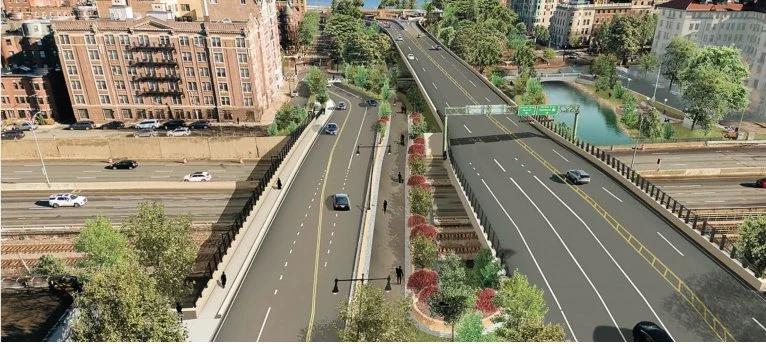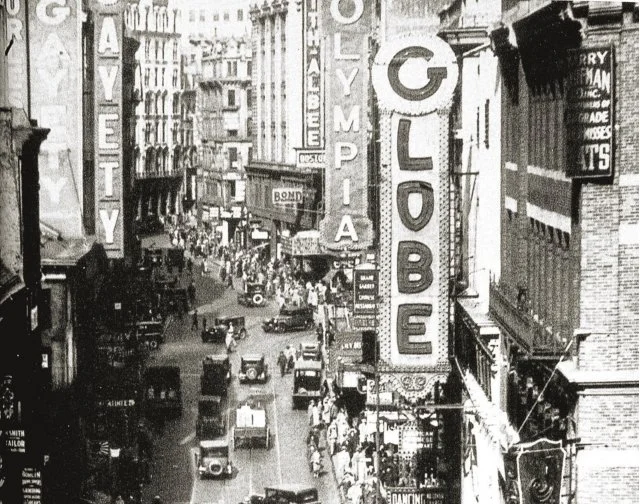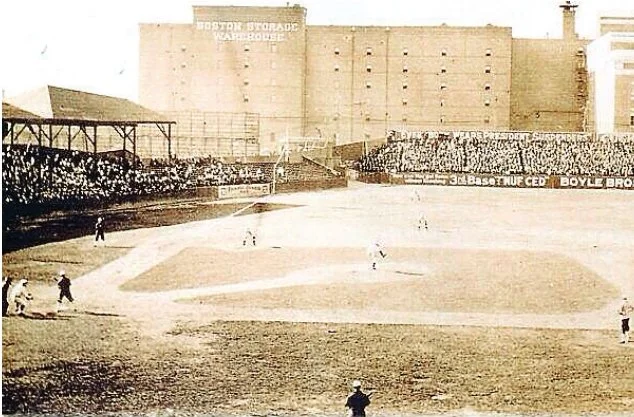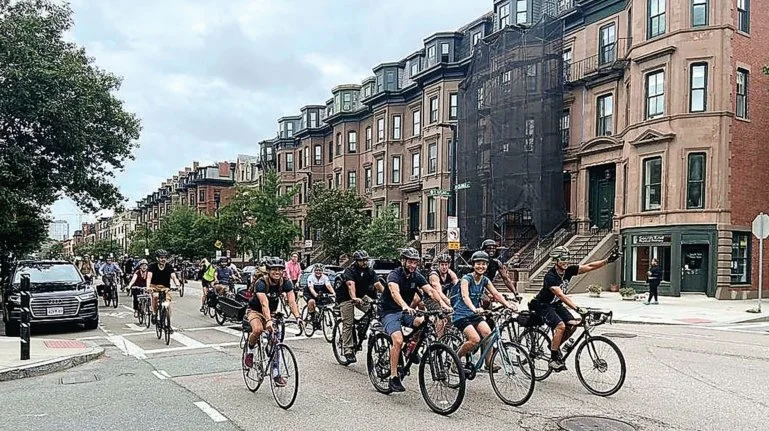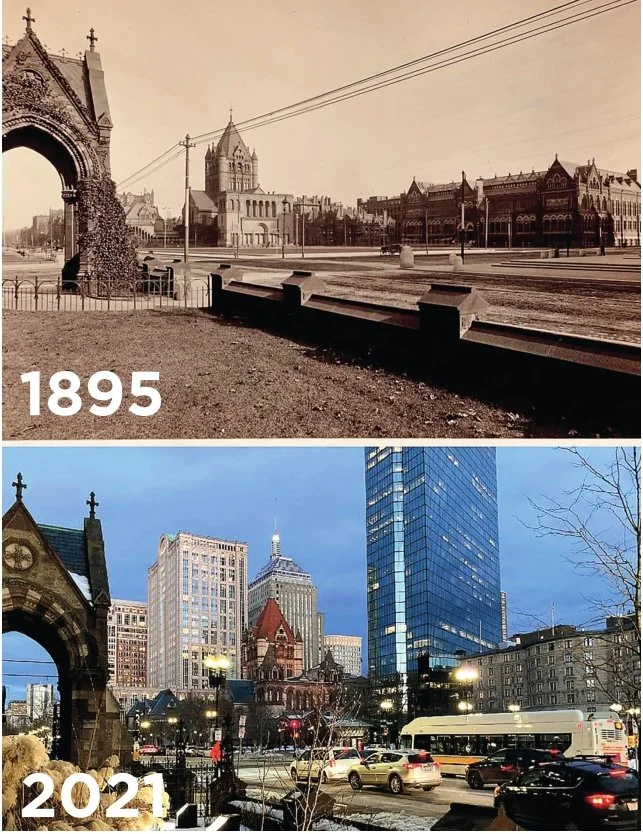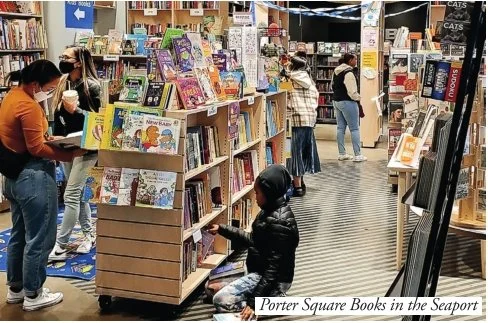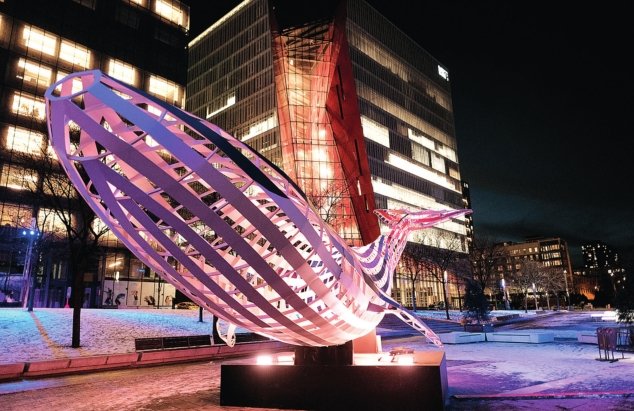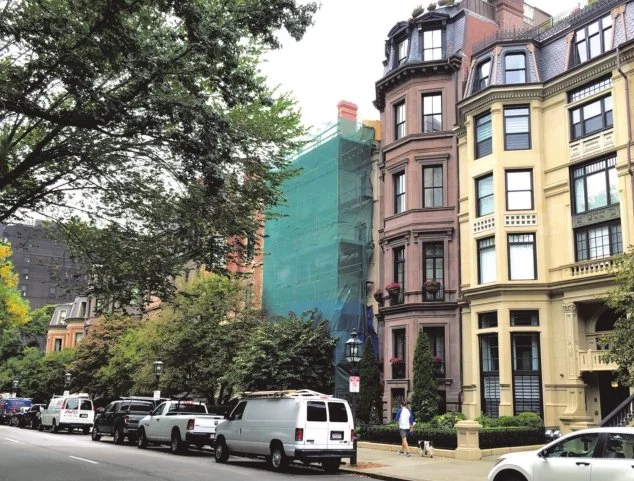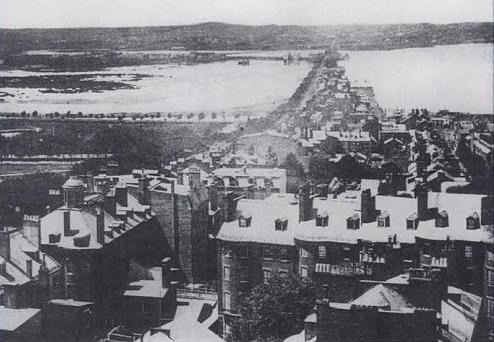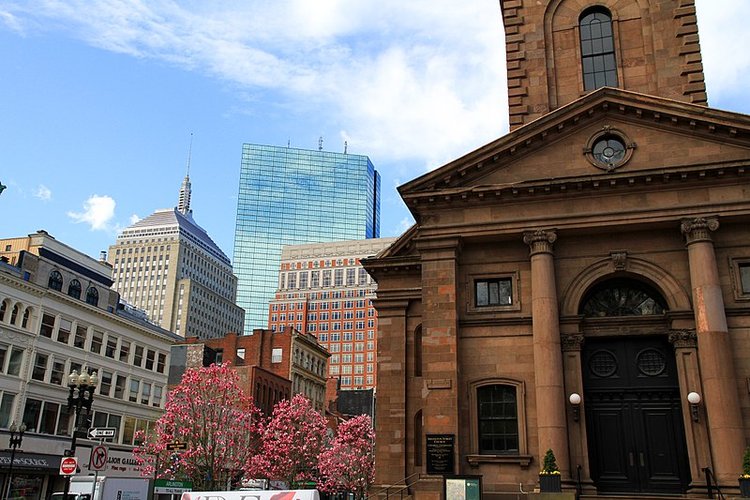
Boston car thieves favor Hondas
Excerpted from The Boston Guardian
(New England Diary’s editor, Robert Whitcomb, is chairman of The Boston Guardian.)
Boston’s car thieves are setting themselves apart from the rest of the country with their preferred targets, going after Hondas and the traditionally targeted pickups while their peers shift to Hyundais and Kias.
Data from the Boston Police Department shows Honda as Boston’s highest-risk car brand, with 113 Hondas stolen since the beginning of 2024.
Almost half of those have been Honda Accords, far and away the most popular target for car thieves at 47 thefts. The second highest make at 26 thefts was still a Honda, the Honda CR-V.
That’s a marked departure from national trends, where data from the National Insurance Crime Bureau (NICB) suggests full size pickups have been almost kicked off the 2023 leaderboards in the scramble for cars from Hyundai and Kia.
Viral social media posts showing security flaws in those brands saw crimes involving them skyrocket 10,000 percent since 2020. Hyundai Elantras and Sonatas took first and second place respectively, followed by the Kia Optima.
Primacy in plumbing
Edited from From The Boston Guardian
In 1829, the Tremont Hotel opened at the corner of Tremont and Beacon streets in downtown Boston. It had 170 rooms that each rented for $2 a day and included four meals. In 1869 the Tremont became the first hotel in the U.S. to install indoor plumbing. Notable guests included Davy Crockett and Charles Dickens. In 1895, the hotel was razed and replaced with an office building.
Trying to create 'multimodal paradise' along Emerald Necklace
What part it would look like
Excerpted from The Boston Guardian
(New England Diary’s editor, Robert Whitcomb, is chairman of The Boston Guardian)
State planners have finalized plans to revitalize Boston’s Bowker Overpass, the Fenway’s eastern gate, repairing crumbling road infrastructure and turning a dangerous pedestrian intersection into a multimodal paradise.
The Massachusetts Department of Transportation (MassDOT) gave the public its most complete picture yet on July 11. The public forum saw general support from residents and civic groups eager to see the broader Charlesgate project move toward fully opening that part of the Emerald Necklace.
Today, the 60-year old Bowker overpass is a knot of asphalt roads, connecting Boylston Street to Commonwealth Avenue over the I-90. Officials showed pictures of crumbling concrete and exposed rebar rusting away in the elements…..
The new layout will offer distinct paths for bikes, cars and pedestrians all the way to Commonwealth Avenue from either direction, with bikes and pedestrians sharing some parts.
The offramps will also be redesigned, with one new road to Charlesgate west replacing the ramps on either side to Commonwealth Avenue.
Nervous gay times on lower Washington Street
Washington Street in the 1920’s.
Excerpted from From The Boston Guardian
(New England Diary’s editor, Robert Whitcomb, is chairman of The Boston Guardian.)
“Before the Combat Zone, lower Washington Street was Gay Times Square, a mecca of bright lights, entertainment and a tolerance for life beyond the societal norms of heterosexuality….
“Prior to being plagued with strip joints with names like The Naked i Cabaret and the Pussycat Lounge, the neighborhood was home to Playland, the Petty Lounge and Touraine Cafe. The gathering places drew an LGBTQ crowd, while the local theaters, such as the Stuart Theater and the Pilgrim, created a show-business atmosphere that New York’s Times Square is known for.
“Many of the bar owners in the area often used bribery or connections with organized crime to keep police from raiding their establishments, according to research from The History Project, a Boston-based LGBTQ history organization.
“In the 1950s and 1960s, threats of persecution and prosecution kept the LGBTQ community underground, making many of the bars on Washington Street appealing….”
Before Fenway
Playing at the Huntington Avenue field in the early 20th Century.
Excerpted from The Boston Guardian
“The Huntington Avenue American League Baseball Grounds was one of the most popular and well-attended baseball fields in Boston in the early 20th Century. The large open-air field was on Huntington Avenue, just west of Massachusetts Avenue and opposite the Boston Opera House. It was the first home of the Boston Red Sox.
“In 1901, ground was officially broken in the Fenway area of the city for the new baseball field, with a covered grandstand and high wood fences, that was to have a capacity of 11,500 spectators….
“The baseball field was the site of the World Series game between the current American and National Leagues in 1903, the first perfect game in the modern era, thrown by Cy Young in 1904.’’
Hit this link to read the whole article, by historian Anthony Sammarco
What happened to downtown Boston 'height bonus' model?
“The Downtown’s deferred zoning update has abruptly lost one of its core propositions, replacing a pay-for-height proposal with new ‘skyline districts’ and leaving compensation for that height to the yet undecided Article 80 process.
“The Boston Planning and Development Agency (BPDA) outlined the changes in an April 9 public meeting on PLAN: Downtown, a sweeping set of reforms that drastically changes downtown zoning to allow more businesses and, in some places, increases the maximum building height by hundreds of feet.
“PLAN: Downtown was supposed to be resolved back in November but proved controversial enough to delay full adoption and split into three parts to be debated separately this year.
“Now PLAN: Downtown seems to have lost its central ‘height bonus’ model that allowed developers to build by right up to state shadow and aviation limits in exchange for proportional donations to a community fund.’’
To read the whole article, please hit this link.
Cullen Paradis: Are BlueBikes in Boston skirting state safety law?
Biking in the Back Bay
(New England Diary editor Robert Whitcomb is chairman of The Boston Guardian)
“BlueBikes in Boston may be skirting state regulations meant to ensure bike safety, fulfilling a helmet availability requirement by selling them on their online storefront.
“State law requires all bike rental businesses to make helmets available to customers as well. Yet if you pay for a ride at a BlueBike rack, you won’t see any helmet being offered.
“That’s because the company fulfills its legal obligation by selling branded helmets on its website, ensuring all customers have the option of safety so long as they’re willing to walk the bike home, wait for the helmet to be shipped to them, and only then ride to their destination.
“That’s if customers can even find the storefront. The BlueBikes Website does not include a link in the top banner, tucking the sole mention of a store all the way at the bottom of the page next to the privacy statement and career board….’’
To read the whole article, please hit this link.
Cullen Paradis is a Boston Guardian reporter
BlueBikes are the Ruggles MBTA station in 2019.
Trying to meld historic preservation, diversity and climate resilience in Boston
Edited from a Boston Guardian article
(Robert Whitcomb, New England Diary’s editor/publisher, is The Boston Guardian’s chairman.)
“The administration of Boston Mayor Michelle Wu wants to expand the city’s preservation policies to focus on diversity and climate resilience.
“The enhancements were explained at a citywide meeting by Murray Miller, director of the Office of Historic Preservation (OHP), a city entity established by Wu in 2022.
“The OHP comprises three bodies.
“Drawing most of the office’s resources, the Landmarks Commission works to protect Boston’s historic structures. It also oversees the ten local historic district commissions, each of which focuses on preserving a different Boston neighborhood. The office also includes the Commemoration Commission and the Archaeology Program.
“For much of the meeting, Miller presented the office’s strategic vision. Overall, he said he intends to expand the office’s purview beyond its traditional role as a regulator of landmarks.
“One of the office’s key focuses, he said, will be to tell the ‘full story’ of the city’s history. The office will devote more money to discovering and preserving historic sites connected to Boston’s Black, indigenous, immigrant and LGBTQ communities..
“Miller also highlighted climate resilience as an important mission for the office.
“Incentivizing developers to renovate existing structures could help increase resilience, he said, as could reworking Article 85, a part of Boston’s zoning code that allows applicants to request a demolition delay for potentially historic buildings.’’
To read the full article, please hit this link.
Indie bookstores in Boston doing well
(New England Diary’s editor, Robert Whitcomb, is chairman of The Boston Guardian)
Boston’s independent bookstore scene is at its healthiest in decades, and it could continue communities, while three existing stores have expanded their operations, according to The Boston Globe. Boston’s downtown neighborhoods have seen the lion’s share of this growth, growing in 2024.
Since 2020, at least eight claiming four of the openings and bookstores have set up shop one of the expansions.
Paired with bookstores’ slim margins, Boston’s expensive commercial real estate has largely prevented bookstores from opening downtown over the past few decades, said Beth Ineson, executive director of the New England Independent Booksellers Association, a trade association. But that changed after a dip in real estate prices following the pandemic.
“My association has seen an unprecedented amount of growth across the entire region during that time because there was more commercial real estate easily available,” she said. Even after its recent renaissance, downtown’s bookstore scene could still have some room to grow. Ineson said that because of Boston’s highly educated population, the city still has fewer bookstores than one would expect for a city of its size.
“Our demographics in Boston proper really should support far more independent bookstores than have previously been downtown,” she said. “Given the population here, there’s certainly always room for more stores, and I’m delighted that we see stores opening in different neighborhoods in the city.”
Of Boston’s downtown neighborhoods, the Seaport has seen some of the most impressive growth in its bookstore scene. Though it didn’t have a bookstore before the pandemic, the fast-growing and once- industrial neighborhood now has two just blocks apart.
‘Winteractive’ whale in Boston
Boston behemoth
From The Boston Guardian:
“A massive whale sculpture has received final approval for installation in {Boston’s} Downtown Crossing, promising to interact with visitors through responsive light and sounds….
“Hailing from Quebec, the 60-foot sculpture is the first component of the ‘Winteractive’ public art series sponsored by the Downtown Business Improvement District (BID)….
“The completed art series will form a linear path through the Downtown with a focus on lights, interactive exhibitions and play features that can occupy younger audiences. In addition to Downtown Crossing, the BID also hopes to bring visitors to Chinatown, the financial district, Government Center and the theater district.’’
To read the whole article, please hit this link.
Trying to keep up grand appearances at years roll by
In Boston’s Back Bay neighborhood, an old house is draped while being repaired.
Old building materials, new insulation standards and consistently wet summers can spell trouble for many of Boston's historic homes, contractors and experts said, so property owners need to be on the lookout now for warning signs.
Neighborhoods like the Back Bay, Beacon Hill and South End are known for historic brownstones and rowhouses, but buildings from a century ago weren't constructed according to current codes.
In particular, lintels which support walls above doors and windows, may have been made with steel, but what was state-ofthe-art then is woefully out of date now, according to John Holland of Holland & Co., who has decades of construction and rehab experience.
"When steel lintels were introduced in the turn of the century, they were new material, but they weren't galvanized," Holland said, noting that kind of metal is susceptible to rust and water damage, and that can lead to significant repairs as water freezes and expands over time, damaging stone, and lintels.
To read the whole article, please hit this link.
View (1858) from the Massachusetts State House westward along the Mill Dam (now Beacon Street), which separated Back Bay (left) from the Charles River. The Mill Dam and the Cross Dam (in distance is the modern Massachusetts Avenue-Kenmore Square area, with mills barely visible near juncture with the Mill Dam). They were part of an attempt to derive power from tides. Trees along north-south waterline represent western boundary (now Arlington Street) of the Boston Public Garden.
The Back Bay was built on land reclaimed from the Charles River basin. Construction began in 1859, as the demand for luxury housing exceeded the availability in the city at the time, and the area was fully built by around 1900. It remains one of Boston’s richest neighborhoods
The sub on the street
A captured Axis submarine is pulled down Tremont Street, in downtown Boston, in 1942 as part of a “Buy War Bonds’’ rally. President Trump would have loved this!
Thanks to our colleague David Jacobs of The Boston Guardian for forwarding this to us.
Boston's old private clubs press on in the 21st Century
The august Somerset Ciub, at 42-43 Beacon St., Boston.
This piece first ran in The Boston Guardian as Robert Whitcomb's March "Boston Diary'' entry.
That members of the Algonquin Club have voted to sell the old Back Bay institution, at 217 Commonwealth Ave., to a developer that will turn it into a for-profit (shocking!) club, focused my attention on Boston’s old clubs. I’ve been in most of them, as a guest, over the past half century. To me, they’re still museums of class, but with some new human exhibits.
The Algonquin, founded in 1886, was one of what had been men’s clubs (they’re gender-integrated now) founded in the mid to late 19th Century as meeting places for Boston’s elite, made rich by international trade and the Industrial Revolution. The Somerset, Union, Tavern, Algonquin and the St. Botolph clubs remain the most famous; the University and Harvard clubs are a different species. Then there’s the Chilton Club, founded very late, in 1910, for ladies but now admitting men.
They each had their special reputations. For example, the old story goes, the Somerset had the old-money types, the Algonquin those still trying to make a pile, the Union the money managers (lawyers, trust officers, etc.) and the St. Botolph’s the arty and literary types.
These are “third places’’ --– not home, but with homelike aspects not found in restaurants and hotels, and certainly not work places, although many members would be likely to run into colleagues there.
Such “mansions away from mansions,’’ as Sam Hornblower called them in The Harvard Crimson in 2000, were/are very appealing both for their creature comforts and how they are seen as validating high social status. Further, until recent decades, Boston was not famed for its restaurants and its hotels (the old Ritz Carlton a famous exception). The clubs helped fill the service gap for real and wanna-be Brahmins.\
But the Hub has become much more like Manhattan, and now abounds with great restaurants and hotels. And even rich lawyers, businesspeople, academics and physicians are much more likely in these frantic days to eat at their desks or restaurants than at old clubs, which tend to be run in elegantly unhurried ways. Meanwhile, the ethnic coherence of these places as refuges for the old WASP aristocracy has long been crumbling in an increasingly globalized, multi-ethnic and meritocratic Boston. Mix up membership or die!
(I’m increasingly struck by how much downtown Boston has come to look like Manhattan. As you walk east across the Common, with the skyscrapers in front of you, you’d think you were walking east in southern Central Park.)
I think that most of the old clubs will survive, although their lunch business will continue to lag. With good marketing, the aging of the population and the increasing density of very rich people in, especially, the Back Bay and on Beacon Hill, should be good for the institutions. They can draw growing numbers of wealthy retired and semi-retired people, especially if these clubs boost the number of special events, such as famous speakers.
Even as the Algonquin is turned into a for-profit for striving Millennials, the rest of the clubs will go on in pretty much the same way, except that more of the criteria for membership will be relaxed. (What will happen to the old “blackball’’ tradition?”)
One criterion for admission, however, that won’t change is the need to have lots of money, new or old.
Boston Guardian has opening for a reporter
The Boston Guardian, the city's biggest weekly and covering the most dynamic parts of Boston, has an opening for a reporter with two or three years experience. If interested, please contact David Jacobs, publisher, at:
djacobs@thebostonguardian.com
The Arlington Street Church, close to the headquarters of The Boston Guardian. The church used to be jokingly called "The Unitarian Vatican''.
Boston Guardian has an opening for reporter
The Arlington Street Church, very close to the headquarters of The Boston Guardian.
The Boston Guardian, the city's biggest weekly and covering the most dynamic parts of Boston, has an opening for a reporter with two or three years experience. If interested, please contact David Jacobs, publisher, at:
djacobs@thebostonguardian.com
Job openings at Boston's biggest weekly
Boston’s largest-circulation weekly newspaper is looking for one or more hard-news reporters with experience in complex urban issues (development, zoning, transportation, etc.)
Must have a minimum of one year’s experience beyond college and already live in Boston or a contiguous city.
Please email resume and three hard news clips to:djacobs@thebostonguardian.com
Compensation is commensurate with experience.
David Jacobs
Publisher/Editor
The Boston Guardian
'Egg-addling' to try to stem Canada geese population explosion in Boston
From Robert Whitcomb's "Digital Diary,'' in GoLocal24.com
My friends at The Boston Guardian report that there’s an effort underway to get some residents to help reduce the swelling Canada geese population by “egg-addling,’’ which includes “painting vegetable oil on the eggs or gently scrambling them so they don't come to term. ‘’ Sounds cruel, but the goose droppings are a bit of a health issue, albeit probably exaggerated.
Marion Larson, spokeswoman for the Massachusetts Division of Fisheries and Wildlife, explains that Canada geese were once used as live decoys for hunters until that practice was banned in the ‘30s. But, she told The Guardian, while many of these birds were then liberated, they had “their migratory instincts bred out of them.’’ So now their descendants hang around all winter and make a mess, although they are fun to watch.
They particularly love golf courses, which take up too much open space.
Like raccoons and more recently coyotes, these wild animals have learned to live among people, opportunistically taking advantage of the human-related food, such as garbage and backyard plants, and the relative lack of other predators near people. Given how human over-population is rapidly taking over and ruining much wildlife habitat, in the end perhaps only such opportunistic species will thrive in the future.
If only they would
“To my knowledge, nobody has fallen into the lagoon yet,” said Susan Abell, director of communications at the Friends of the {Boston} Public Garden.
— regarding Pokémon players wandering around America like zombies from The Night of the Living Dead, as reported in the current issue of The Boston Guardian.



